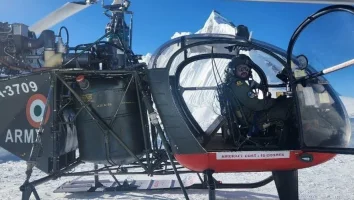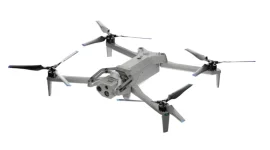- Views: 819
- Replies: 1
The Indian Army is strategically deploying its attack helicopters, with the indigenous Light Combat Helicopter (LCH) "Prachand" taking the lead in high-altitude regions, while the recently acquired Boeing AH-64E Apache Guardians are slated for desert operations.
This decision comes as the delivery of the first three Apaches has been delayed to December 2024 due to supply chain issues, with the final delivery expected by early 2025.
The Apaches, renowned for their anti-armor capabilities, will be stationed at the Nagtalao Army Base near Jodhpur, a strategic location for countering potential threats in the desert regions bordering Pakistan.
These 'tank killers' are equipped with Hellfire missiles, enabling them to track and prioritize up to 128 targets a minute, significantly bolstering India's defence posture.
While the Indian Air Force (IAF) already operates Apaches, including deployments in Ladakh, their effectiveness in high-altitude environments has been called into question.
A recent incident involving an IAF Apache stranded at high altitude for several months highlighted the challenges of operating these helicopters in such demanding conditions.
This is where the LCH "Prachand" comes to the forefront. Specifically designed for high-altitude warfare, the Prachand boasts a superior operational envelope compared to the Apache.
"We have already tested the Apache helicopters in the operating conditions and have decided to deploy in the desert condition," an Indian Army official confirmed.
The LCH has proven its high-altitude prowess with successful test landings on the Siachen glacier at altitudes exceeding 15,800 feet. This indigenous helicopter, powered by two Shakti turboshaft engines, offers a range of 700 kilometers and a service ceiling of 6,500 meters, surpassing the Apache in endurance.
Armed with a 20mm nose gun, 70mm rocket pods, and anti-tank guided missiles, the LCH is a versatile platform capable of fulfilling various roles, from anti-tank and scouting missions to search and rescue operations.
The Indian Army has already approved the procurement of 90 LCHs, with plans to deploy 70 in mountainous terrains. Wing Commander Saurabh Sharma, Flight Commander of the Dhanush Squadron operating the LCH, praised its agility and striking power, stating, "This machine flies like a butterfly and stings like a bee."
This strategic deployment of the LCH and Apache highlights India's commitment to utilizing its resources effectively, ensuring optimal operational capabilities across diverse terrains and threat scenarios.



